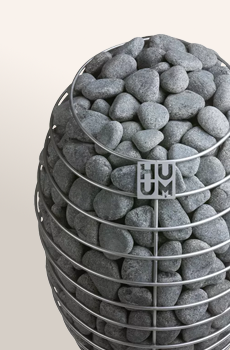
1. Cardiovascular Health & Stroke Risk
A general term for conditions affecting the heart and/or blood vessels, cardiovascular disease is a significant cause of disability in the UK and is responsible for one in four premature deaths.
There have been many studies regarding cardiovascular treatment that zero in on sauna bathing as a viable treatment option and preventative measure of the disease, and several proposed mechanisms by which saunas improve cardiovascular health. These include the increased cardiac output and reduced vascular resistance attributed to exposure to heat, and the improved cardiac and blood vessel function markers and reduced arterial stiffness [1]. However, of the various effects sauna bathing had on cardiovascular health, there are ultimately three areas that appeared most impacted:
Overall cardiovascular function and blood pressure
In a 2015 study aimed at investigating the association between frequent sauna bathing various cardiovascular issues, it was found that sauna bathing significantly reduced the risk of sudden cardiac death, fatal cardiovascular and coronary heart disease, and all-cause mortality [2]. Many independent studies also found that regular sauna bathing lowered mean blood pressure in both hypertensive patients and healthy individuals [3].

Overall, the results of both these studies and those referenced within them strongly support the observation that regular sauna bathing is an excellent lifestyle habit. Its ability to stimulate the same physiological responses as mild exercise whilst simultaneously creating a relaxing environment and releasing endorphins mean it is well suited to reducing blood pressure and improving cardiovascular health.
Heart failure and congestive heart failure (CHF)
These serious and progressive chronic conditions both negatively impact the heart muscles’ pumping ability and power, albeit to different degrees (CHF refers to the specific stage of heart failure where fluid build-up around the heart seriously impacts its ability to pump blood).
It has been found that patients with heart failure will show improved physical capabilities after two weeks sauna therapy, compared to individuals who only receive standard medical care [4]. Furthermore, this repeated sauna therapy can also cause patients with CHF to display many physiological improvements, including improved cardiac function and pulmonary wedge pressure [5].
Another notable way sauna helps to fight heart failure is through lessening premature ventricular contractions – a recognised contributor, and even cause, of heart failure in individuals suffering from arrhythmias and chronic heart failure. As little as two weeks of frequent sauna use is enough to create a notable improvement in sauna bathers compared to individuals that do not sauna [6].
Arterial stiffness and arterial disease
A recent study that looked specifically at individuals with pre-existing cardiovascular risk factors (such as obesity or high blood pressure) found that vascular function is improved after as few as one 30-minute sauna bath. During this time, blood pressure is decreased and positive alterations in arterial stiffness parameters occur [7]. For these reasons, sauna bathing is a recommendable health activity not only for healthy individuals but especially for those with cardiovascular risk factors.
Sauna bathing has also been found to be extremely beneficial for preventing and treating peripheral arterial disease; a condition that unfortunately remains a common source of pain and disability for many individuals. After regular sauna use for several weeks, patients with this condition found that they had improved circulation in their legs, reduced pain, and were capable of walking with more ease [1].
It can also help with more severe medical problems, such as the type of arterial blockage that results in coronary heart disease. By increasing blood flow to the heart by way of improving blood vessel function, sauna bathing is able to relieve symptoms in patients with arterial disease, including those who are unable to undergo medical intervention (including surgery) [8].
Stroke risk
Another global public health problem, stroke is one of the most common forms of cardiovascular disease; one which shares many of its common but major risk factors such as high blood pressure [9][10]. As for sauna’s effect on this issue, a large long-term study of 1,628 participants consisting of both men and women recently found that sauna bathing is strongly associated with a decreased risk of future stroke events over a 15-year follow-up for both men and women, regardless of age [11]. This is not surprising, as one of sauna’s foremost effects is the significant lowering of blood pressure; a major contributor to stroke risk [7].
References
[1] Hussain, J and Cohen, M (2018) ‘Clinical Effects of Regular Dry Sauna Bathing: A Systematic Review’ Evidence Based Complementary Alternative Medicine. 970 Available at: https://www.ncbi.nlm.nih.gov/pubmed/29849692
[2] Laukkanen, T et al (2015) ‘Association Between Sauna Bathing and Fatal Cardiovascular and All-Cause Mortality Events’ JAMA Internal Medicine 175(4) pp. 542-548. Available at: https://www.ncbi.nlm.nih.gov/pubmed/25705824
[3] Hannuksela, M and Ellahham, S (2001) ‘Benefits and risks of sauna bathing’ The American Journal of Medicine 110(2) pp. 118-126. Available at: https://www.researchgate.net/publication/12163683_Benefits_and_risks_of_sauna_bathing
[4] Tei, C et al (2016) ‘Waon therapy for managing chronic heart failure - Results from a multicenter prospective randomized WAON-CHF study’ Circulation Journal 80(40). pp.827–834. Available at: https://www.ncbi.nlm.nih.gov/pubmed/27001189
[5] Blum, N and Blum, A (2007) ‘Beneficial effects of sauna bathing fir heart failure patients’ Experimental and Clinical Cardiology. 12(1) pp. 29-32. Available at: https://www.ncbi.nlm.nih.gov/pmc/articles/PMC2359619/pdf/ecc12029.pdf
[6] Kihara, T et al (2004) ‘Effects of Repeated Sauna Treatment on Ventricular Arrhythmias in Patients with Chronic Heart Failure’ Circulation Journal (68) pp. 1146-1151. Available at: https://www.jstage.jst.go.jp/article/circj/68/12/68_12_1146/_pdf/-char/en
[7] Laukkanen, T et al (2018) ‘Acute effects of sauna bathing on cardiovascular function’ Journal of Human Hypertension 32(2) pp. 129-138 Available at: https://www.ncbi.nlm.nih.gov/pubmed/29269746
[8] Sobajima, M et al (2013) ‘Repeated sauna therapy improves myocardial perfusion in patients with chronically occluded coronary artery-related ischemia’ International Journal of Cardiology 167(1) pp. 237-243. Available at: https://www.sciencedirect.com/science/article/pii/S0167527311022455
[9] World Health Organisation (2008) The global burden of disease: 2004 update. Geneva: WHO. Available at: https://www.who.int/healthinfo/global_burden_disease/GBD_report_2004update_full.pdf
[10] Mackay, J and Mensah, G (2004) The atlas of heart disease and stroke. Geneva: WHO.
[11] Kunutsor, S et al (2018) ‘Sauna bathing reduces the risk of stroke in Finnish men and women: a prospective cohort study’ Neurology 99(22). Available at: https://n.neurology.org/content/90/22/e1937
---
2. Relaxation, Stress Reduction & Sleep Improvement
Back to Sauna Health Introduction















